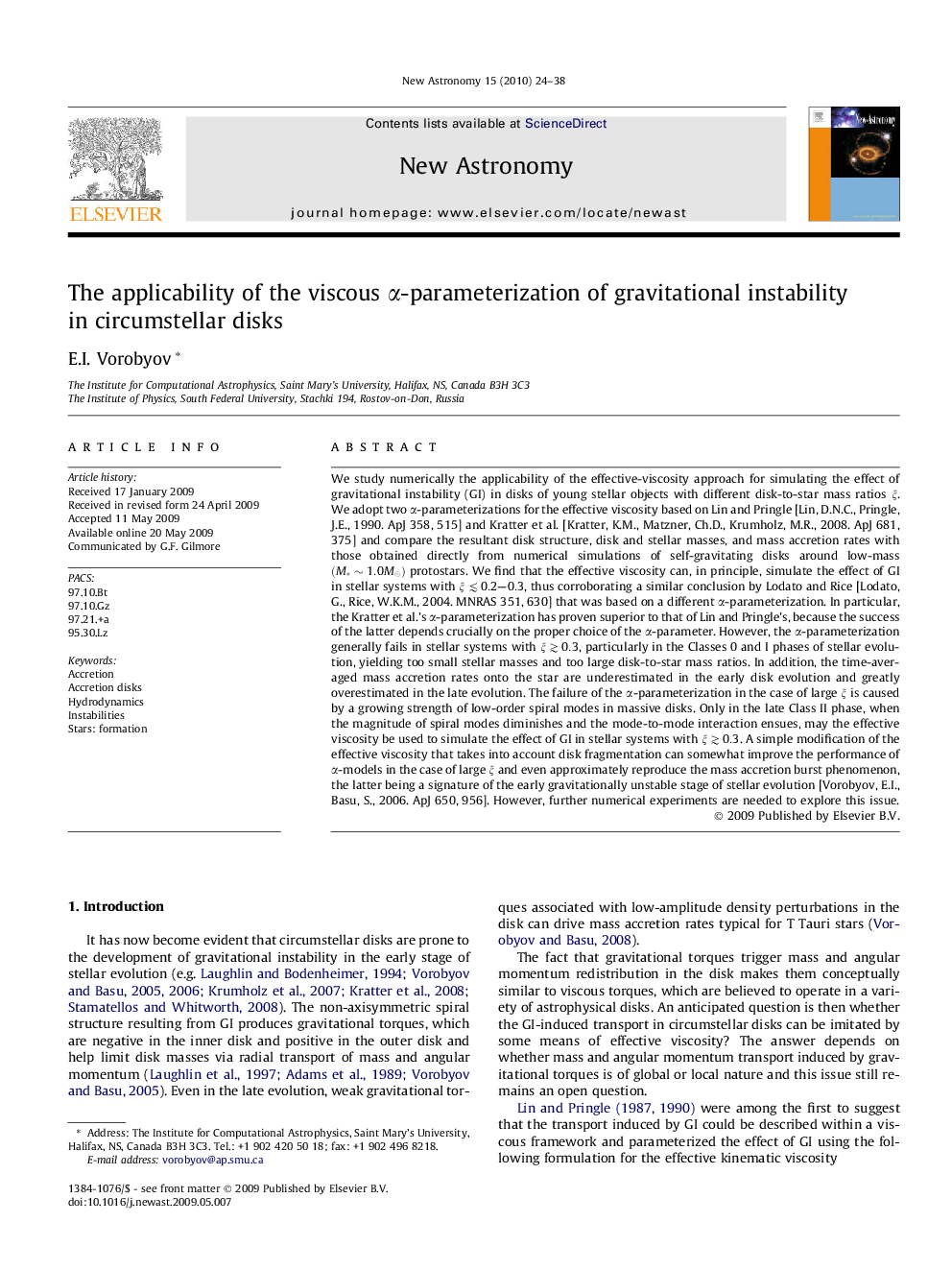| Article ID | Journal | Published Year | Pages | File Type |
|---|---|---|---|---|
| 1779478 | New Astronomy | 2010 | 15 Pages |
We study numerically the applicability of the effective-viscosity approach for simulating the effect of gravitational instability (GI) in disks of young stellar objects with different disk-to-star mass ratios ξξ. We adopt two α -parameterizations for the effective viscosity based on Lin and Pringle [Lin, D.N.C., Pringle, J.E., 1990. ApJ 358, 515] and Kratter et al. [Kratter, K.M., Matzner, Ch.D., Krumholz, M.R., 2008. ApJ 681, 375] and compare the resultant disk structure, disk and stellar masses, and mass accretion rates with those obtained directly from numerical simulations of self-gravitating disks around low-mass (M∗∼1.0M⊙)(M∗∼1.0M⊙) protostars. We find that the effective viscosity can, in principle, simulate the effect of GI in stellar systems with ξ≲0.2–0.3ξ≲0.2–0.3, thus corroborating a similar conclusion by Lodato and Rice [Lodato, G., Rice, W.K.M., 2004. MNRAS 351, 630] that was based on a different α-parameterization. In particular, the Kratter et al.’s α-parameterization has proven superior to that of Lin and Pringle’s, because the success of the latter depends crucially on the proper choice of the α-parameter. However, the α -parameterization generally fails in stellar systems with ξ≳0.3ξ≳0.3, particularly in the Classes 0 and I phases of stellar evolution, yielding too small stellar masses and too large disk-to-star mass ratios. In addition, the time-averaged mass accretion rates onto the star are underestimated in the early disk evolution and greatly overestimated in the late evolution. The failure of the α -parameterization in the case of large ξξ is caused by a growing strength of low-order spiral modes in massive disks. Only in the late Class II phase, when the magnitude of spiral modes diminishes and the mode-to-mode interaction ensues, may the effective viscosity be used to simulate the effect of GI in stellar systems with ξ≳0.3ξ≳0.3. A simple modification of the effective viscosity that takes into account disk fragmentation can somewhat improve the performance of α -models in the case of large ξξ and even approximately reproduce the mass accretion burst phenomenon, the latter being a signature of the early gravitationally unstable stage of stellar evolution [Vorobyov, E.I., Basu, S., 2006. ApJ 650, 956]. However, further numerical experiments are needed to explore this issue.
